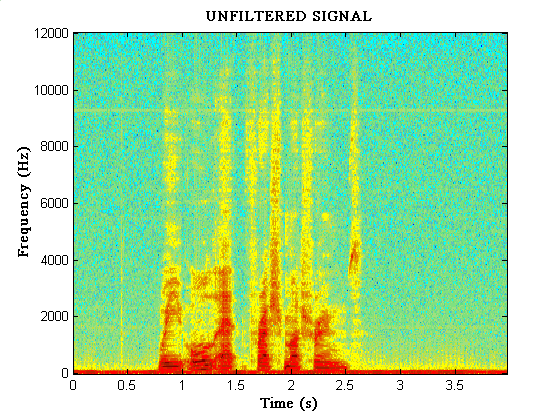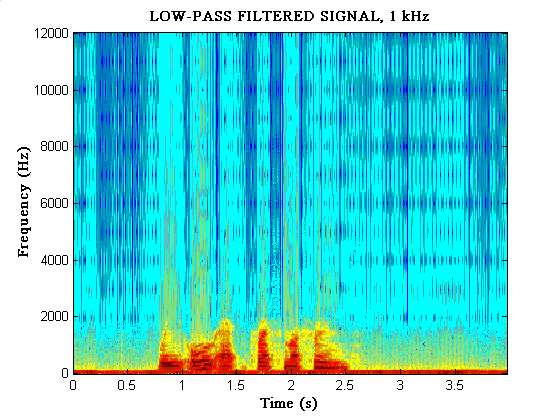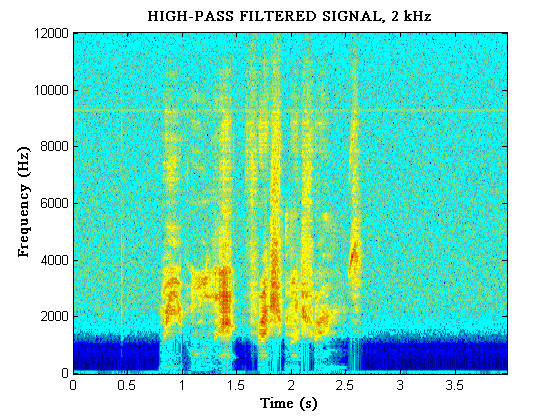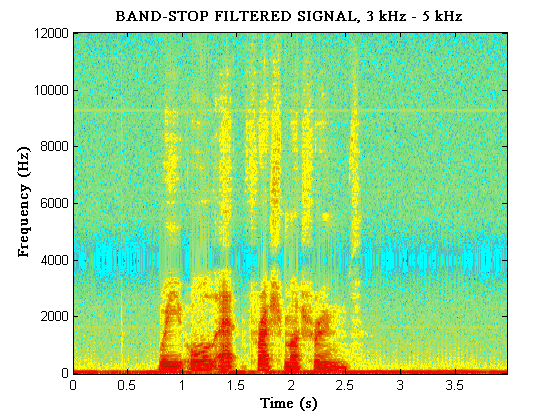The sound of filtering
Acoustical engineers very often have to analyse sounds by measuring them with a microphone that produces a fluctuating electrical voltage. Microphones are designed to give a fluctuating voltage that mimics almost exactly the fluctuating pressure produced by the sound. We call the microphone output voltage a signal and the technology of analysing and modifying these signals is called Signal Processing.
One of the most basic building blocks of signal processing is the filter which removes some frequencies from a sound while leaving others unchanged. Here we take a short segment of speech and show the effects of applying different filters. We’ll plot the sound as a function of both time and frequency, so you can see the effects as well as hearing them. First of all the unfiltered speech. Listen to the audio file below, and try to relate the picture to what you are hearing.

In the next example, you can hear how the speech sounds when passed through a filter which reduces the amplitude of everything above 1kHz.

A different effect is obtained by filtering out frequencies below 2kHz. Compare this to the effect of playing sound over a very small loudspeaker, such as that found in a miniature radio, which is unable to reproduce low frequency signals well.

By combining filters we can take out the frequencies in a particular frequency range. Before listening, ask yourself what effect you expect this to have on the sound.
